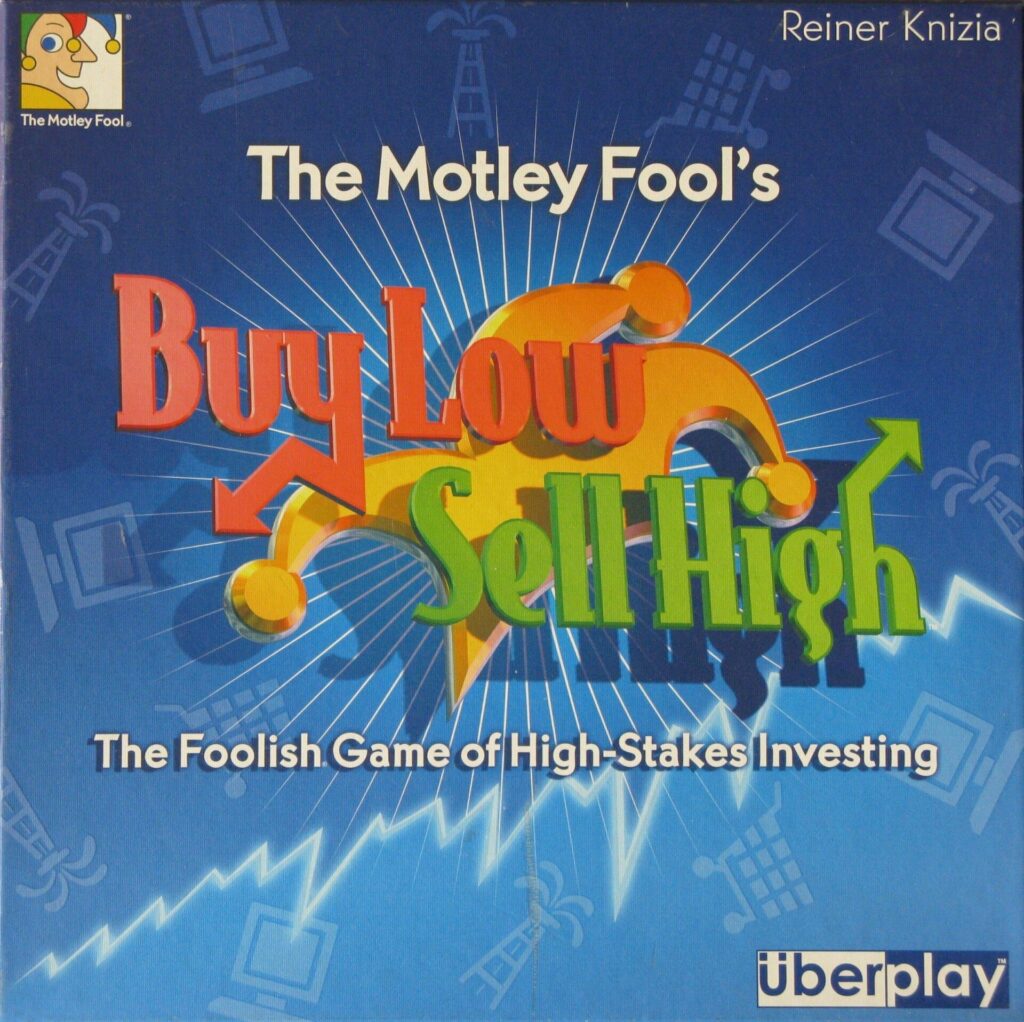How To Play: Buy Low Sell High – Setup, rule summary and strategy
To excel in 'Buy Low Sell High', it's essential to understand market demand, master the timing of your trades, and diversify your investment portfolio wisely. Always stay alert to subtle cues and anticipate Market shifts. Practice these strategies, and you'll be trading like a pro in no time!

Overview
Welcome to the ultimate guide to mastering ‘Buy Low Sell High’—your key to victory! Here, we’ll cover the essential outline of the game’s rules and showcase the best winning strategies. Whether it’s your first time trading or you’re looking to sharpen your skills, this guide is your starting point to emerge as a top player among your friends. Let’s dive into the intricacies of market play and lay down a robust strategy for success.
What’s in the box
- 1 Game Board
- 150 Commodity Cards
- 6 Company Coasters
- Paper Money
- 1 Die
- 5 Company Pegs
- 5 Merchandise Mats
- 1 Bell
How To Play Buy Low Sell High: Rules Summary
Setting up the Stage
- Distribute starting capital to players.
- Prepare the market board.
- Set aside reserve assets for trading.
Getting Down to Business
- Players take turns buying or selling assets.
- Utilize market information to make decisions.
- Exchange assets at fluctuating market prices.
Clinching the Win
- Achieve highest net worth to win.
- The game ends after the last round.
Navigating the Ebb and Flow
- Sidestep unexpected market events with agility.
- Adapt to new conditions applied every round.
- Capitalize on opportunities unique to the game state.
Best Buy Low Sell High Strategies
Mastering Market Demand in Buy Low Sell High
Firstly, grasping market demand is pivotal. To thrive, constantly analyze emerging trends. This way, you can anticipate which goods will soar in value. Remember, adapting to market shifts swiftly bolsters your chances.
1. Recognize Demand Triggers
- Seasonal changes often influence demand. Stockpile items preemptively for profitable outcomes.
2. Monitor Competitors
- Observing rivals helps identify what products might become scarce. Scarcity often equals opportunity.
3. Exploit Niche Markets
- Targeting underexploited areas allows for buying low undisrupted, then selling high as demand peaks.
Mastering the Clock: Precision in Market Timing
Success in ‘How To Play Buy Low Sell High’ largely hinges on impeccable timing for both acquisitions and sales. In dynamic markets, the diligent gamer always comes out ahead. Let’s dive into strategies:
- Observe patterns and anticipate market shifts. Behind every trend is an optimal buy or sell moment; strike when movement is on the upswing.
- Player actions are preludes to price changes. React promptly to competitors angling to buy or offload stocks. Be one step ahead!
- Fast isn’t always favorable. Strategically time your transactions; rushing can lead to missteps, while undue hesitance may cause missed opportunities.
- Keep abreast of in-game news. Understand how events might sway prices, then act swiftly to capitalize on these fluctuations.
- As game rounds draw to a close, expect heightened activity. Prepare to buy or sell as players make their final moves.
Anticipating Shifts
Watching the Competition
Regulating Speed
Translating News into Action
Predicting Closing Surges
Master the Market: Diversifying Your Portfolio
When I first stumbled onto ‘How To Play Buy Low Sell High’, I’ll admit I put all my virtual eggs in one basket. A rash decision that cost me everything by the second round. Learning from that, diversification became my mantra. Spread your risks! Here’s my personal playbook on diversification adapted for ‘How To Play Buy Low Sell High’:
Avoiding Single-Market Pitfalls
Initially, I did what most rookies do—focused on one promising commodity. Big mistake! Diversifying across various markets is paramount; even if one crashes, you’re still in the game.
Investment in Different Phases
Time your investments! Including assets at varying maturity levels offers an alternative pacing—another twist in our strategic embrace.
React, Adapt, and Distribute
- Different markets react differently to changes. If you notice a market drop, don’t let it spell disaster for your portfolio as a whole.
- Shift your focus. When one sector is in decline, it’s often an opportunity to invest more heavily in another that’s rising.
- Maintain portfolio fluidity. Don’t lock into one composition for long. Markets evolve, so should your investments.
Becoming a Trading Tycoon in Buy Low Sell High
After diving into the nuances of market trends, improving the timing of your trades, and learning the importance of having a diverse portfolio, you’re well on your way to mastering the art of ‘How To Play Buy Low Sell High’. Remember, every playthrough offers new learning opportunities. Stay sharp, stay savvy, and may your instincts guide you to successful trades. Share your high scores or epic comebacks in the comments, and let’s grow this community of traders. Keep playing and refining your strategies, and soon you’ll be topping the leaderboards!
Want to know what we think of Buy Low Sell High? Read our detailed review of Buy Low Sell High here

